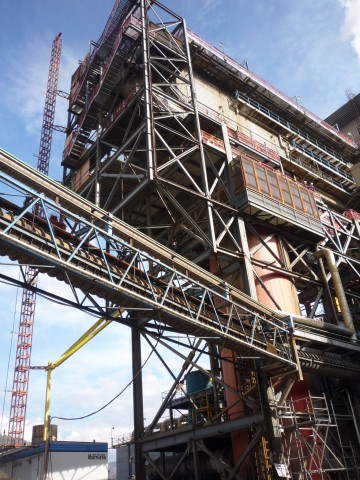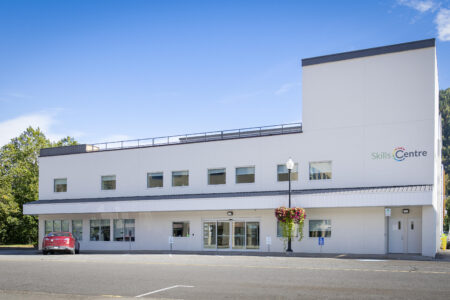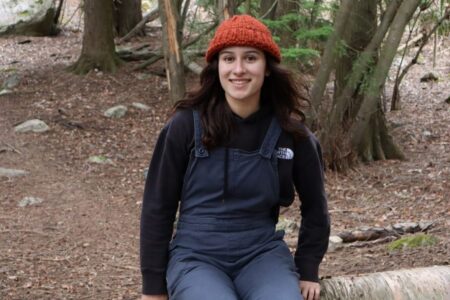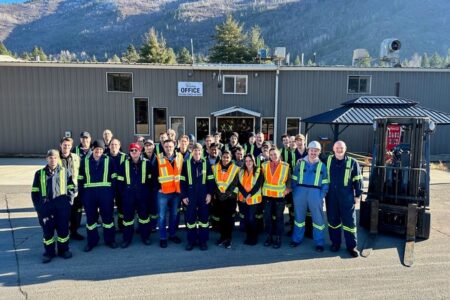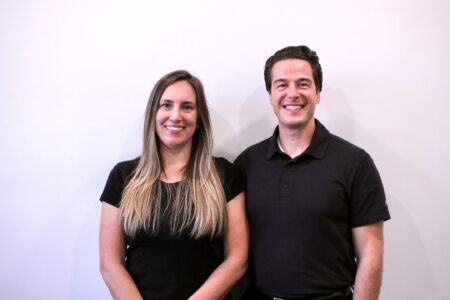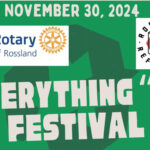Heavy Metal Afternoon: Touring Teck’s Lead Smelting Operation
One of the drawbacks of living in Rossland is that there is absolutely no heavy metal scene around here. Oh, what I would do to be able to attend the gigs of some of my favourite Euro-metal bands without having to travel to Vancouver and Calgary! And even then the stuff I want to see is so obscure they don’t often come to even those two big centres, and I can’t afford to jet off to Europe when there is a wicked show on I’d love to see.
However, I did manage to have a very heavy metal afternoon on Monday, right in my own back yard! The metal in this case was lead, as I was taken, along with two fellow reporters, on an exclusive tour of Teck’s lead smelting operation – somewhere the company doesn’t usually take members of the public.
I was extremely excited about this opportunity because, even though I grew up as a Cominco brat, I had never ever been inside any of the operations. I had dropped my dad off and picked him up from his job in the indium plant in the 1990s, but that only involved driving through the main gate and up an access road to a parking lot any old person could get to. If there were Cominco family days when I was growing up, we certainly didn’t attend any. Since Cominco had been such a big part of our lives as a family, this opportunity to get a tour of areas beyond that parking lot was quite the thrill.
Before arriving at Teck, I was asked to provide my shoe size and dress size so that appropriately-sized protective gear could be prepared for me. The gear included work boots, a blue coveralls, goggles, a hard hat, ear plugs, and a respirator. It was lucky I don’t have a beard or else I would have had to shave the whole thing off, since anyone who works in an area requiring a respirator must be clean-shaven so the device seals around the mouth and nose properly. I did find out, rather awkwardly, and after breaking a zipper, that the coveralls are not necessarily suited for women with rather bosomy physiques. Just wearing the gear gave me a whole new respect for the people that work in the smelter. It’s heavy, it’s hot, and the respirator was uncomfortable. I wore jeans and a T-shirt under my coveralls, and it was really sweaty. I did find out, however, that employees who wear the coveralls wear special long-john-like undies, which would be a lot cooler. Also, the respirators the employees use are specially fitted for each individual, and therefore would be more comfortable for the wearer. It was however, hard to speak and be heard wearing a respirator in a loud environment like the lead smelter, especially when wearing ear plugs. After donning our gear, us three reporters were lead out into a courtyard by our four tour guides: Carol Vanelli-Worosz, Teck’s Communications Manager; Greg Balland, Production Manager; Dale Webb, the lead smelter’s Operating Manager; and Richard Deane, Manager of Energy & Public Affairs. At this point I was told by Richard that all the water I was seeing on the ground, and even rain water, is collected and purified before being released, in order to remove impurities. High above me was an overwhelming mess of pipes, tubes, and walkways, which got even more overwhelming as we moved down a ramp into a second courtyard, then up a flight of steps and into the lead smelter itself. I was kind of expecting something out of Lord of the Rings, like the Mines of Moria and Khazad-dûm – you know, huge cavernous space and a big, raging inferno complete with lots of flames and smoke. Instead, I was greeted by lots more pipes and tubes. To our left was a huge row of cooling jackets containing the water that is used to cool the lead down after it comes out of the smelting process. The engineering behind this seemed so remarkable to me because it looked so complex and never-ending. From there we were treated to a view and explanation of the Kivcet furnace. According to Teck literature, Kivcet is “a Russian-developed flash smelting process that produces up to 120,000 tonnes of lead boullion per year from a single furnace.” Starting up in 1997, this furnace changed lead smelting in Trail on a revolutionary scale, “reducing particulates (smoke) by 90% and metal emissions by 70 to 90%.” Because of the proprietary nature of this technology, we reporters were asked not to photograph the goings-on in this area. Again there was nothing Khazad-dûm-ish about this place, but what was particularly cool about it was seeing a river of liquid lead flowing like silvery water down a gentle waterfall. Talk about heavy metal in its element! At this stage, the lead is 400 degrees Celsius and moving on to the Drossing Plant, where copper is removed, and after that it continues on to another stage where silver, gold, bismuth, arsenic, and antimony are removed using oxygen. Our next stop was the Drossing Plant, and after that we negotiated a series of steps and walkways to the Feed Plant, passing under a system of huge orange ducts. These ducts do one of three things: some contain gas from the smelting process, which goes on to the Acid Plants; another contains a conveyor belt that remove dust from the plant; and yet another provides ventilation. The Feed Plant is where where all the original mixes come in to be refined in the lead smelter. While not particularly attractive – they look like big cement pits filled with coarse grit – the sheer size of them was indeed impressive; you’d feel as small as an insect if you ever were unfortunate enough to find yourself at the bottom of one. The tour concluded shortly thereafter. While it was whirlwind in nature, it was also exhilarating to see inside this beast of a building and operation. There was a bit of a rush involved. Kind of like the rush I’d feel at a metal gig, only without all the safety gear!


